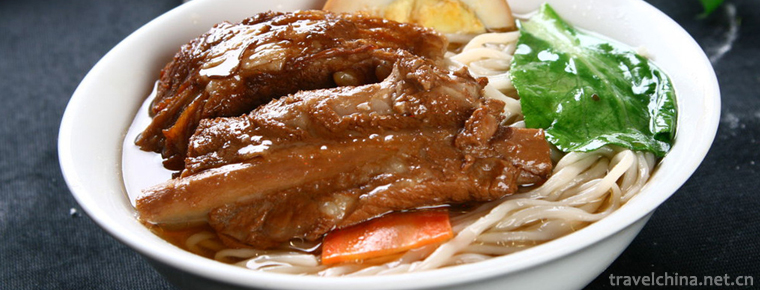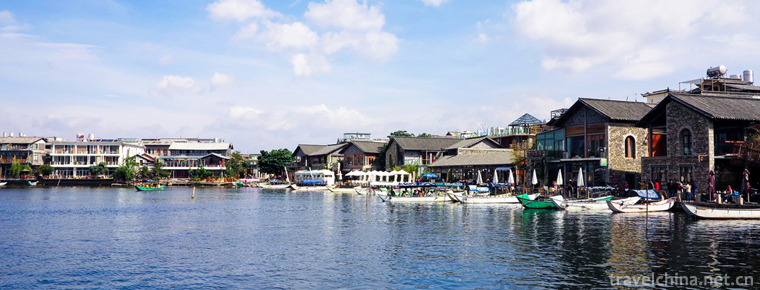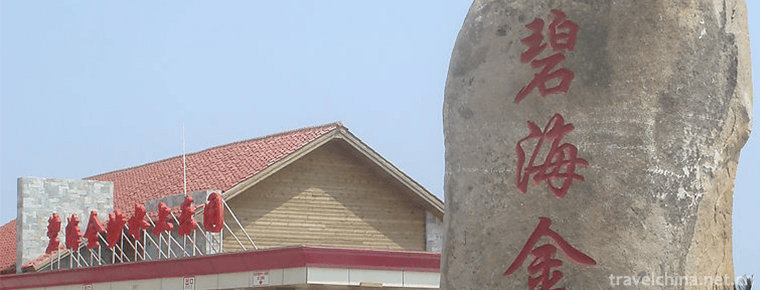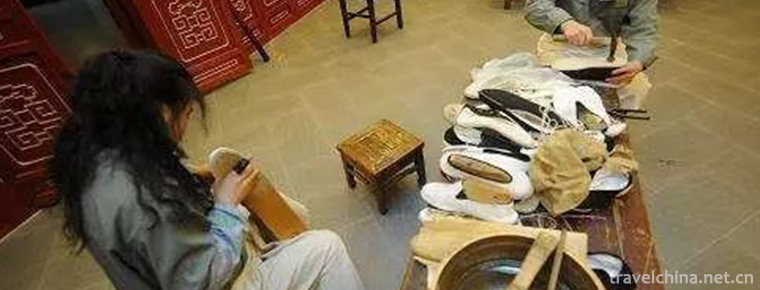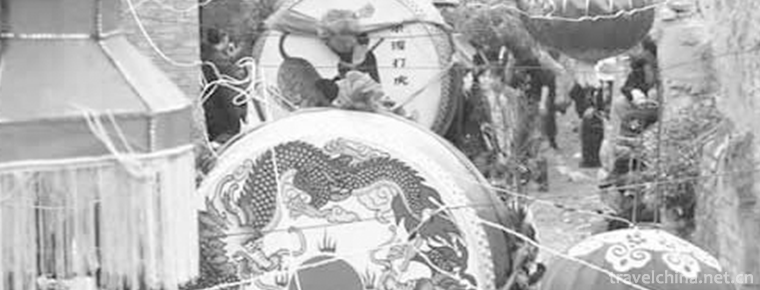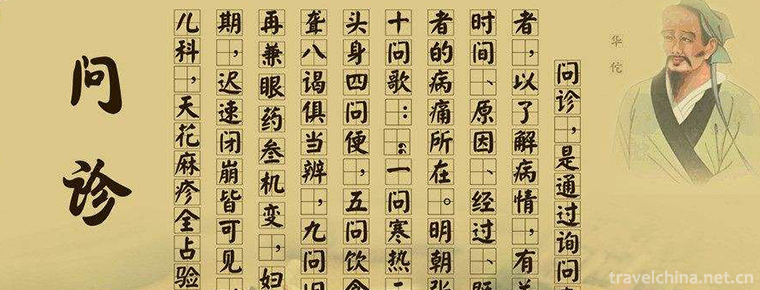Baling Opera
Baling Opera
Baling Opera, a local traditional drama in Yueyang City, Hunan Province, is one of the national intangible cultural heritage.
Baling Opera, formerly known as Baxiang Opera, is also called Yuezhou Ban among the people. It was officially named Baling Opera since 1953. Baling Opera originated from Kun Opera which was introduced into Hunan in Wanli period of Ming Dynasty. Yiyang Opera flowed into Hunan in the late Ming and early Qing Dynasty. During Qianlong period of Qing Dynasty, Baling Opera absorbed the artistic factors of other operas, mainly singing ballad tune, singing Kun Opera and miscellaneous tune minor, and gradually developed into a more stable Opera vocal opera. The content of Baling Opera is mostly based on historical stories and scripts, mainly reflecting the political and military struggles of past dynasties. It is a valuable material for the study of the evolution of Chinese opera and the formation and development of local operas.
On May 20, 2006, Baling Opera was approved by the State Council of the People's Republic of China to be included in the first batch of national intangible cultural heritage catalogues, numbered IV-34.
historical origin
Yueyang has a long history of historical righteousness. Since the Eastern Zhou Dynasty, cultural and artistic activities have been very prosperous. By the end of the Yuan Dynasty, Southern Opera and Zaju were successively spread here. The origin of Baling Opera can be traced back to ancient times. Baling Opera with mature form should be counted from the Ming Dynasty. It has a history of 400 years. Throughout the formation and development of Yueyang Baling Opera, it roughly goes through the following stages: gestation period, formation period, prosperity period, decline period and rescue protection period.
Pregnancy and formation
Yueyang music culture has a long history. During the Eastern Zhou Dynasty, there were traces of ancestors and cultural relics of singing and dancing. The discovery of the ancient piano "Qiang" in Pingjiang area is enough to prove the highly developed musical activities of the ancestors. By the Spring and Autumn Period and the Warring States Period, worship of witches and Nuo was rife everywhere, and religious singing and dancing activities were prevalent in many ancient villages. Folk songs and dances in Yueyang were very flourishing at this time. Quyuan, a great patriotic poet, fully described the large-scale folk sacrificial scenes prevailing in Chu through his masterpieces Lisao and Children's Songs, so that people could fully appreciate the mystery of folk religion singing and dancing and witch Nuo culture in Chu. With the birth of Wunuo culture, folk music activities have gained sufficient living space.
In the Middle Ages, Yueyang advocated witchcraft song and exorcise, and Nine Songs were still popular. Liu Yuxi, a poet of the Middle Tang Dynasty, said in his Bamboo Branch Ci: "In the first month of the year, Yu Lai Jianping, Li Zhonger sang bamboo branches, played Piccolo and drum to go to the festival, and the singers praised and danced, and listened to their music. Zhonghuang Zhongyu, whose death Zhang is as fierce as Wu Sheng, is indivisible, but tactful and has Qipu Yan. In the past, Quyuan lived between Yuanxiang and Hunan. His people greeted God and his words were crude. It is for Nine Songs. To this day, Jingchu encouraged him." In the Song Dynasty, Fan Zhiming's "Records of Yueyang's Local Conditions" of Qing Dynasty, such as "men's and women's treading songs" and "good song Blowing pipe", fully demonstrated the prosperity of song and dance in Yueyang city at this time. By the end of Yuan Dynasty and the beginning of Ming Dynasty, the north and South were unified, the land and water commerce was smooth, and the artists who sang the North Zaju came to the South continuously. The mixed atmosphere of Zaju and local music and dance began to prevail in Yueyang area.
At the end of the Ming Dynasty, Yang Xiangfeng, a Baling native, wrote a poem called "Yueyang Tower Guan Ma Yuanrong Jiale" in his 1643 Collection of Self-Herding in Chongzhen: "Yueyang City is like a cluster of brocades under the city, and the wind and dust break through the deaf drum. Qin Zhuchu dialect dialect, all kinds of sadness how many. At that time, the artistic form of singing sad things in Chu dialect, that is, the spontaneous troupe singing in northern Hunan dialect, was widely spread in Yueyang. Thus the embryonic form of Baling Opera came into being. According to the Diary of Yuan Xiaoxiu, a rare Chinese literary book, "Shi Youling's two interoperable works are Wu Yue and Chu Diary". Wu Yin's The Boudoir and Chu Yin's Jinchai. Yueyang belongs to the State of Chu. It is the gateway to northern Hunan and is close to Shashi City. Chu Diao is naturally easy to spread to Yueyang. According to the legend of artists of Baling Opera in past dynasties, "Baling Opera artists have been handed down from generation to generation. There are Hongsheng Ban in Yueyang of Ming Dynasty. Hongyuliang, the leader of this class, is the ancestor of Baling Opera". It can be inferred that the Baling Opera in Yueyang was indeed formed in the late Ming Dynasty.
In the mid-16th century, Kunshan Opera, which rose in Taicang, Jiangsu Province, quickly became popular all over the country. The Wanli year spread to Hunan, and Baling Opera in Yueyang was deeply affected at that time. Kun Opera is fully integrated with local dialects and folk music forms in Yueyang. The unique style of Kun Opera in Baling Opera has been formed. According to Yang Maojian's Menghua Trivial Book in the Jiadao Period of the Qing Dynasty, "(Daoguang 18 years) in summer, I went to Yueyang for 18 days, and learned Xu Sanzhiqing (Shucheng), and Christian scholar..." Restoration of the degree of bending, and the remaining intersection is irreversible. "As for Xu Sanzhi's work in Yueyang, it is the evidence that Yueyang also has Kunqu Opera." These records all show that Kun Opera is the main voice of Baling Opera in Yueyang in the late Ming and early Qing Dynasties. Baling Opera still retains some traditional Kun Opera repertoires, such as Tianguan Blessing, Da Sanxing, and so on. Many Kunqu opera cards are still used in stage performances.
Boom and bust
During the reign of Qianlong in Qing Dynasty, social economy developed rapidly and various folk arts flourished gradually. At that time, Yuezhou was an important town in northern Hunan, where various local opera cultures converged. Different tunes blended with each other and competed with each other to make Yueyang Baling Opera present a grand situation of mixed tunes. Kun Opera, Blow Opera, Silk String minor and other types of voice are scattered in a large number of plays. The new chaotic tunes, such as "inverted slab pulp", "mandarin duck tune", "Luoluo tune", "Yinnusi", "Weiqiang", are complete and flexible in form. They can sing lyrics of various metrics, speed up the rhythm of performance and break through the structure of the ancient Kunqu opera. Gentle and elegant was replaced by agility and liveliness, and ballistic cavity became the main voice of Baling Opera in Yueyang. At this time, various theatre troupes exchanged with each other. Yueyang people opened their doors, absorbed the advantages of other theatres, and improved themselves in the process of continuous integration.
The formation of ballistic cavity of Baling Opera in Yueyang is mainly influenced by Hui tune and Xiangyang tune, which are divided into North and South routes. According to "Hankou Series Talks" published in Daoguang's second year (1822), "Li Cuiguan, a native of Etongcheng, lived in Yuejun when he was young and lived in Yuejun, the Yubu of Chu, the south of the famous lake for several years. He came to the Han Dynasty, about 20 years old, and belonged to the Rongqing Department. Li Mao is not more than a person, but every decoration on the stage, the audience saliently praised. It is inferred that Li Cui-guan studied drama in Yueyang during the 30 years of Qianlong reign of the Qing Dynasty. The activities of Chu Yubu in Yueyang were naturally earlier. Zhou Yibai thought: "The pop song"Yang Fei Drunken"sung by Li Cuiguan was already in Siping Tune. Later, when Gao Xiuzhi, a member of the group and artist, went to Hankou to perform, Ye Tiaoyuan's work "Bamboo Branch Ci of Hankao" praised it: "The most desolate counter-tone in the tune is that the West Pei is slowly yellowing." Li Cuiguan went to Hankou to join a group to sing operas, and joined Anhui artists in the same stage. The performances of "Yang Fei Drunken", "Pani Chasing the Boat" and "Yutang Chun" are all traditional operas. The above materials show that the formation of ballistic cavity in Baling Opera has experienced at least 200 years of history. Baling opera artists in past dynasties created constantly, broke through the shackles of the ancient traditions, and made bold exchanges with their brothers to learn from each other, which enriched the repertoire and performing arts. Baling opera's ballast was constantly improved in this process. Since then, Yueyang Baling opera has become a multi-tone opera with ballast as its main form and coexistence of various tunes.
At the end of the Qing Dynasty, Hunan Baling Opera entered its heyday, producing many well-known scientific classes, such as "Baxiang 18 Classes" and "Baxiang 18 Cards", and a large number of famous artists. There are more than 800 artists. It is widely spread in the urban and rural areas where Hunan, Hubei and Jiangxi provinces meet. The puppet show and shadow play, which are deeply loved by the people of Hubei, often use Baling Opera for singing. The theatrical troupes spontaneously composed by the people are often performed in teahouses and restaurants in towns and villages. The singing of drums at night is endless. Among them, Miluo Tongshengyuan, Pingjiang Laolanghui and Changshou Street Qingyin Hall performed most frequently, which had a great influence at that time. New performance venues can be seen everywhere. There are more than 30 stages in Guangyueyang City and its surrounding villages. In addition, the villages of more than 200 households in Dawan Yang, Xiangyin, can form theatre troupes. There are four theatres in nearby areas. These theatrical troupes and stages always compete for performances during the holidays and wedding anniversaries, and they are very lively.
During the period of the Republic of China, natural disasters continued, wars continued frequently, and the haze of disasters covered the land of China. In order to survive, the refugees on the verge of famine had to migrate to the sparsely populated areas for business or reclamation. In order to survive, more than 200 Baling opera artists migrated to Jiangxi. Many artists had to work in teams with local courtrooms. Individual artists with outstanding abilities formed their own group clubs. At this time, Baling opera artists were at the bottom of society, suffering from bullying and oppression, and living a very leisure and difficult life. In addition to natural disasters, man-made disasters and constant warfare, Baling Opera is getting worse and worse and is on the verge of extinction.
Yueyang, near Dongting and along the Yangtze River, has always been a place for military strategists to contend for. During the Anti-Japanese War, Yueyang was ravaged by Japanese invaders for seven years. After years of war, the Baling Opera gradually declined, and the artists lived in extremely difficult conditions. It took three or five years for them to earn a small income. The remaining two classrooms have been in exile in Western Hunan for 22 years. It was not until the eve of the founding of New China that it returned to Yueyang. Baling Opera is also located in the thoroughfare, and suffered more far-reaching and heavy war impact than other operas.
Rescue and protection period
After the founding of New China, the Party and the government attached great importance to the development of the cause of opera. After a series of rescue measures, Baling Opera began to recover from the endangered and revived. The economic income of artists was also guaranteed, especially after the theatre troupe was converted to local state-owned enterprises in 1958, the performers had fixed wages and allocated public housing to solve the housing problem of young actors. At the same time, dormitory buildings were built in Yueyang Film Theatre, Suspension Bridge and Benhe, which made Baling Opera artists who had been wandering for more than 300 years finally have shelter. More importantly, the Baling Opera itself is constantly moving forward. In terms of repertoire, some classical plays have been adapted. In the aspect of performance, the performing procedures are richer and the roles are more diverse. Xiaosheng and Sanhua are beginning to be different from each other in terms of culture and military. Wushu tends to be specialized, and the distinction between Danxing and Danxing is more detailed than before. Accompaniment, joined the Western orchestra, the band members up to 20 musicians, forming a mixed Chinese and Western Orchestra system. The government has also made proper arrangements for performance and rehearsal venues. Yueyang Theatre of Chaxiangzi was designated as the basic performance venue of Baling Theatre Troupe, and later rehearsal venues were built one after another. In addition, the government has a special allocation. In the 1950s, the Baling Theatre Troupe began to buy lanterns, and then added a large number of clothes and props. The living conditions of the whole Baling Theatre Troupe have been greatly improved.
Since the first opera performance in Hunan Province in 1952, Baling Opera has attracted the attention of the Party and the government to train opera specialists. The relevant government departments have convened relevant experts to carry out a series of rescue, excavation and collation work on Baling Opera. Artists also began to summarize the singing experience of Baling Opera. People began to study and analyze the artistic characteristics and value of Baling Opera. So far, the study of Baling Opera in Yueyang has really begun. In 1957, Yueyang County held a training course for Baling Opera actors. In 1960, the Baling Opera School was established in Xiangtan District, which trained a large number of opera talents with strong professional ability. In 1964, Yueyang County began to arrange modern operas in response to the call of the Party Central Committee. Most actors and musicians worked hard to perform new operas. In the process of rehearsing modern operas, they popularized music theory knowledge to artists and improved their professional skills and accomplishments.
During the Cultural Revolution, many artistic materials were destroyed and a large number of artists were cruelly persecuted. In the 1950s, only a few professional theatre troupes were disbanded, and artists were sent to rural areas, industry and mining. After the Third Plenary Session of the Eleventh Central Committee, the local cultural departments began to pay close attention to the excavation, collation, recording and video recording of traditional operas and music. At this time, the Yueyang Baling Theatre Troupe was rebuilt and the remaining professional troupes were revitalized.
When the spring breeze of reform and opening-up came, governments at all levels devoted a lot of manpower and material resources to vigorously support the revitalization of Baling Opera in Yueyang. During this period, Yueyang Baling Theatre Troupe has participated in a number of large-scale performances and exchanges at the provincial and municipal levels, all of which are well-known. In 1992, the Baling Theatre Troupe of Yueyang City was praised as "the first troupe in the world" by the Ministry of Culture, and was invited to participate in the National Excellent Theatre Exhibition held by the Ministry of Culture.
Since the founding of New China more than 60 years ago, Yueyang Baling Opera has gone through an extraordinary and historic road of development. The impact of modern civilization and the change of people's aesthetic preferences make Baling Opera face a severe test in the contemporary development. The success of reporting the list of national intangible cultural heritage in 2006 has brought vitality and hope to the inheritance and development of Baling Opera in the new period.
Cultural characteristics
Music
The music of Baling Opera is divided into two parts: tune and accompaniment music. The tune is divided into Kun tune, tune and miscellaneous tune minors. The tune is divided into South and North tunes, and each has its own countertone. At the same time, there is a special form of tune, Xierhuang, whose crossing door can skillfully integrate the north and South tunes, singing in the South and pulling in the north, with unique flavor. Accompanied by Huqin, Yueqin and Xiaosanxian, accompanied by Suona, flute and long pole, etc. The percussion instruments used for accompaniment include bangu, lesson, tanggu, gong, small banknote, Yungong, Ma gong, etc. There is a complete set of Gong and drum scriptures, which is the link of singing, doing, reading and playing.
Foot color
The three main lines of Baling Opera, namely, Laosheng, Sansheng, Biao, Xiaosheng, Tiao, etc., are divided into three groups: Danxing includes Laosheng, Zhengdan, boudoir, seesaw and Miss Er, and Jingxing includes Dahua Face, Erjing, Ermutou, Sanhua Face, Siqi Lang, etc.
Performance program
Baling Opera sings with Zhongzhou Yun and Huguang Yin in combination with northern Hunan dialect. It pays special attention to the characterization of characters. It has a relatively complete set of traditional performing procedures, forming a rough, simple, delicate and vivid artistic style. Its performances include "inner eight gongs" and "outer eight gongs" and other skills. "Neiba Gong" refers to the eight basic skills of describing the characters'psychology and expressing their emotions: happiness, anger, sadness, happiness, sadness, sadness, hatred and surprise. "Waiba Gong" refers to the use of hands, legs, body, neck and beard, wings, feathers, fans, sleeves, etc.
The performances of Baling Opera pay special attention to the eyes. There are more than 30 kinds of eyes commonly used, such as straight eyes, oblique eyes, happy eyes, angry eyes, sad eyes, sick eyes, Thieves'eyes, jealous eyes, glad eyes and dead eyes. Baling opera artists in past dynasties absorbed folk martial arts and acrobatics in martial arts, and created many performing skills such as throwing forks, throwing chairs, drilling knife rings, drilling ring of fire, turning tables, folding Arhats and flags along the wind.
Dao Bai
In addition to the commonly used rhyme and drama Bai in Baling Opera, there are dialect Baikou in Beijing, Su, Chuan, Huai, Jin, Wuyang and Tongcheng, which are used to express the regional characteristics, identity and personality of some characters.
Popular area
Baling Opera is popular in Yueyang, Xiangyin, Miluo, Pingjiang, Linxiang, Huarong, Tongcheng, Jianli and Xiushui, Tonggu and other places in northern Hunan.
Representative repertoire
Baling Opera is rich in traditional repertoires. According to the statistics of Yueyang Baling Opera Troupe in 2013, there are 423. Most of them are based on historical romances and scripts, and some of them derive from Yuan and Ming Zaju and legends. Habits are divided into four categories: whole version, half version, folders and small plays, with half version being the dominant one. The whole play refers to a complete story, which lasts more than four hours. It includes Su Yanzhuang, Zhong Wuyan, Wu Zixu, Flower Lantern and Erdumei. Half-play refers to a complete story, which is performed for more than two hours. Frequently, there are "Burning Mianshan", "Qinghe Bridge", "Shangtaitai", "Huaihe Ying", "Fengyi Pavilion", "Jianjiang Wei", "Assassin Trial" and so on. "Three Kingdoms" and "Water Margin" operas, which were originally performed in the countryside, can be performed in series for several days according to the plot of the play. Although there are no complete stories, there are exquisite performances and strong artistry, as well as small plays reflecting people's interrogation life, such as Pi Qing Rolling and Fighting the Stove and Dividing the Kirin Pavilion and Wangu Jumping Weiqi in the Story of the Western Chamber. Needle, Hu Wen Calls Poor, etc. According to the voice, there are 3 Kun Opera, 88 South Opera, 231 North Opera, 76 North-South Mixed Opera, 16 Minor Opera, 4 Anqing Opera and 5 Seven-sentence Half Opera. In the 30 years since 1950, three large-scale excavations, exhibitions and performances have been conducted, and a number of traditional plays have been rescued. Before 1964, more than 30 excellent traditional dramas, such as Dayan Song, Nine Whips, Night Dream Crown Belt, Dating Nutrition, Cui Ziyiqi and I Trial of Assassins, were reorganized and adapted.
Inheritance and protection
Inheritance value
Baling Opera is the representative of the theatre in northeastern Hunan, and it plays an important role in the local dramas of Hunan Province and even the whole country. Its stage language, repertoire, voice, music, performance and even performing customs carry a large amount of historical and cultural information related to Yueyang. It is a "living fossil" for the study of Yueyang's historical culture and folk customs, and also a valuable material for the study of the evolution of Chinese opera and the formation and development of local operas.
Inheriting characters
He Qijian, male, born in September 1944, is the representative successor of the fourth batch of national intangible cultural heritage projects, declared by Yueyang City, Hunan Province. Declaration item: Baling Opera.
protective measures
In 2011, Yueyang Baling Opera Inheritance Research Institute was established on the basis of the former Yueyang Baling Opera Troupe, Yueyang Huagu Opera Troupe and Yueyang Song and Dance Troupe. As of July 2018, the Academy has recorded more than 130 traditional scripts, compiled two sets of "Baling Opera Music Materials"; compiled "Baling Opera Chronicle"; compiled "Baling Opera Music Complex" and 50 pieces of music, with a small number of audio and video materials for the performance of the repertoire.
In 2015, the Baling Opera Inheritance Research Institute of Yueyang City built the Baling Opera showroom, which lasted more than 11 months. It collected and collated more than 100 Baling Opera books, music scores, relevant historical materials and inheritance objects. It was completed in April 2016 and became a model of the project construction of non-heritage protection units in the province.
From May 2014 to July 2018, Yueyang Baling Opera Inheritance Research Institute opened a "Baling Opera Performance Popularization Class" in Yueyang Lou Primary School. Since the establishment of the course, the number of students has increased from 20 to more than 100.
social influence
Important activities
On September 3, 2016, at 7:30 p.m., a large-scale historical Baling Opera drama "Far away from the rivers and lakes" created by the Baling Opera Inheritance Research Institute of Yueyang City participated in the "Hunan Opera into Beijing" exhibition, which was performed at the National Local Opera Performance Center.
Honorary commendation
In January 2017, the performers of Baling Opera Inheritance Research Institute of Yueyang City took Baling Opera "Daixin in Pear Garden" to participate in the "Spring Festival Gala of Hunan Children's Opera 2017" and won the gold medal.
In July 2017, as the only representative team of Hunan Province, Yueyang Baling Opera Inheritance Research Institute participated in the "National Children's Opera Plum Blossom Show" and won the "Best Collective Program Award".
international repercussions
In 2014, the Baling Opera Inheritance Research Institute of Yueyang City, on behalf of the former Ministry of Culture, traveled to Turkmenistan to attend the Awaza International Art Festival with wonderful programs such as "Blessing of Heavenly Officials" and "Blocking Horses".
In July 2017, at the recommendation of the Ministry of Culture, Hunan Provincial Culture Department and the invitation of the Sports Culture and Sports Committee of St. Petersburg, Russia, the Baling Opera Inheritance Research Institute of Yueyang City went to Russia to attend the "Summer Chinese Culture Festival of St. Petersburg 2017", and performed Baling Opera "Drunken Princess", "Fan Li Hua" and "Three Forks" in foreign countries.



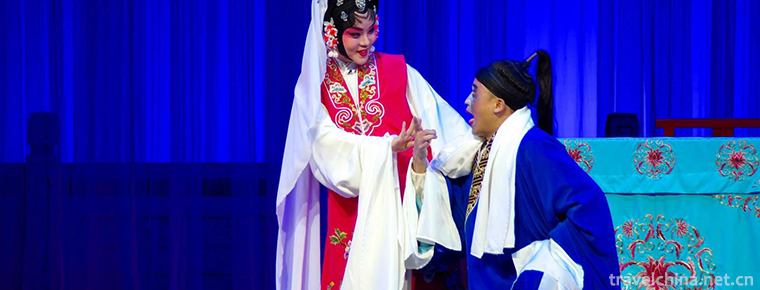
-
Pork ribs Noodles
Pork ribs Noodles are a traditional pasta, especially in Cantonese cuisine.
Views: 188 Time 2018-10-12 -
Shuanglang
located in the northeast of Dali City and the northeast coast of Erhai Lake.
Views: 243 Time 2018-10-17 -
Bihai Jinsha Water Paradise
Bihai Jinsha Water Paradise (i.e. Coastal Recreation Park, abbreviated as "Water Paradise") is built outside the flood control wall, along the flood control wall 1313 meters.
Views: 452 Time 2019-01-03 -
Mudan River Side Wall
The Mudanjiang Side Wall was built in the Tang Dynasty, presumably at the junction of Mudanjiang City in Heilongjiang Province and the northeast of Hailin County. .
Views: 287 Time 2019-02-07 -
Stone Old Man Sightseeing Park
Shilao Sightseeing Park is located in Qingdao City to Laoshan Scenic Area, east of the fishing banquet in the Tang Dynasty, with an area of 1200 mu. Starting at the end of 1999.
Views: 202 Time 2019-02-08 -
Drama Costume and Opera Production Skills
Drama costume and costume production skills, local traditional handicraft in Suzhou City, Jiangsu Province, one of the national intangible cultural heritage..
Views: 97 Time 2019-05-08 -
Manufacturing Skills of Inside Lined 1000 Layer Cloth Shoes
Inline Shoe Shoe Shoe Shoe Shoe Shoe Shop was founded in 1853 in Xianfeng, Qing Dynasty. At first, it was specially designed for the royal family and officials at all levels t.
Views: 302 Time 2019-06-07 -
Silk weaving skills in Suzhou
Tilting, also known as carving, is an ancient and unique traditional weaving process in China. It mainly exists in Suzhou and its surrounding areas. Since the Southern Song Dynasty, Suzhou silk has be.
Views: 344 Time 2019-06-17 -
Yucun drum car
Yucun Drum Car has a history of more than 2,700 years. It has recovered after a long history of ups and downs. Drum truck is a combination of drum and car, which evolved from the ancient chariot. As a.
Views: 93 Time 2019-06-28 -
Yi Peoples Cigarette Box Dance
Yi cigarette box dance, the traditional dance of Hani Yi Autonomous Prefecture in Honghe, Yunnan Province, is one of the national intangible cultural heritage..
Views: 161 Time 2019-07-12 -
Diagnosis of Traditional Chinese Medicine
Diagnosis of traditional Chinese medicine, one of the traditional Chinese medicine, is declared by the Chinese Academy of Traditional Chinese Medicine, one of the national intangible cultural heritage.
Views: 325 Time 2019-08-10 -
Geographical environment of Deyang
Deyang City is located in the northeast edge of Chengdu Plain, with geographical coordinates of 30 ° 31 ′ - 31 ° 42 ′ N and 103 ° 45 ′ - 105 ° 15 ′ E. Deyang borders Fucheng District of Mianyang City in the northeast, Santai County of Mianyang City in the East.
Views: 308 Time 2020-12-14
